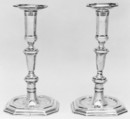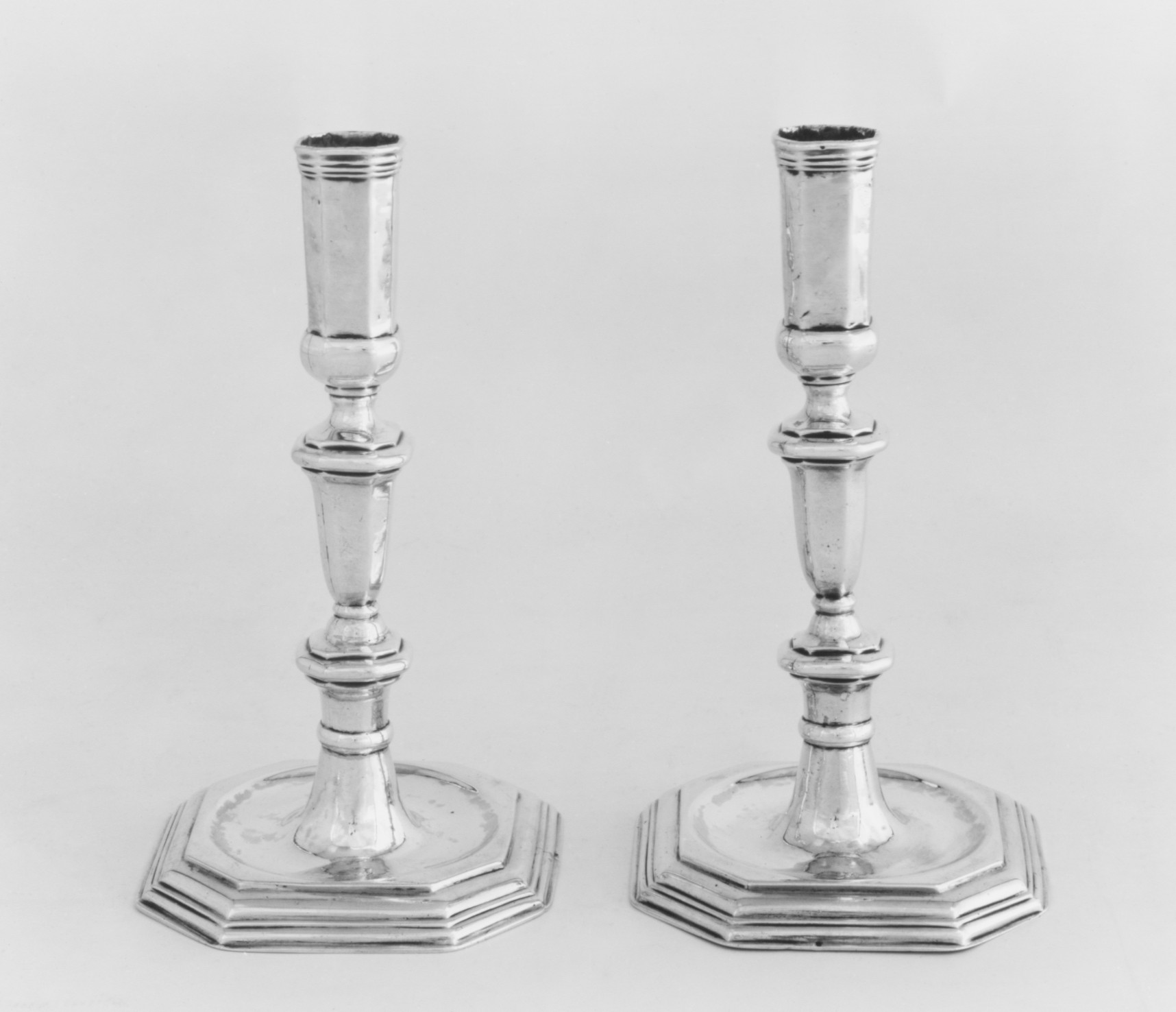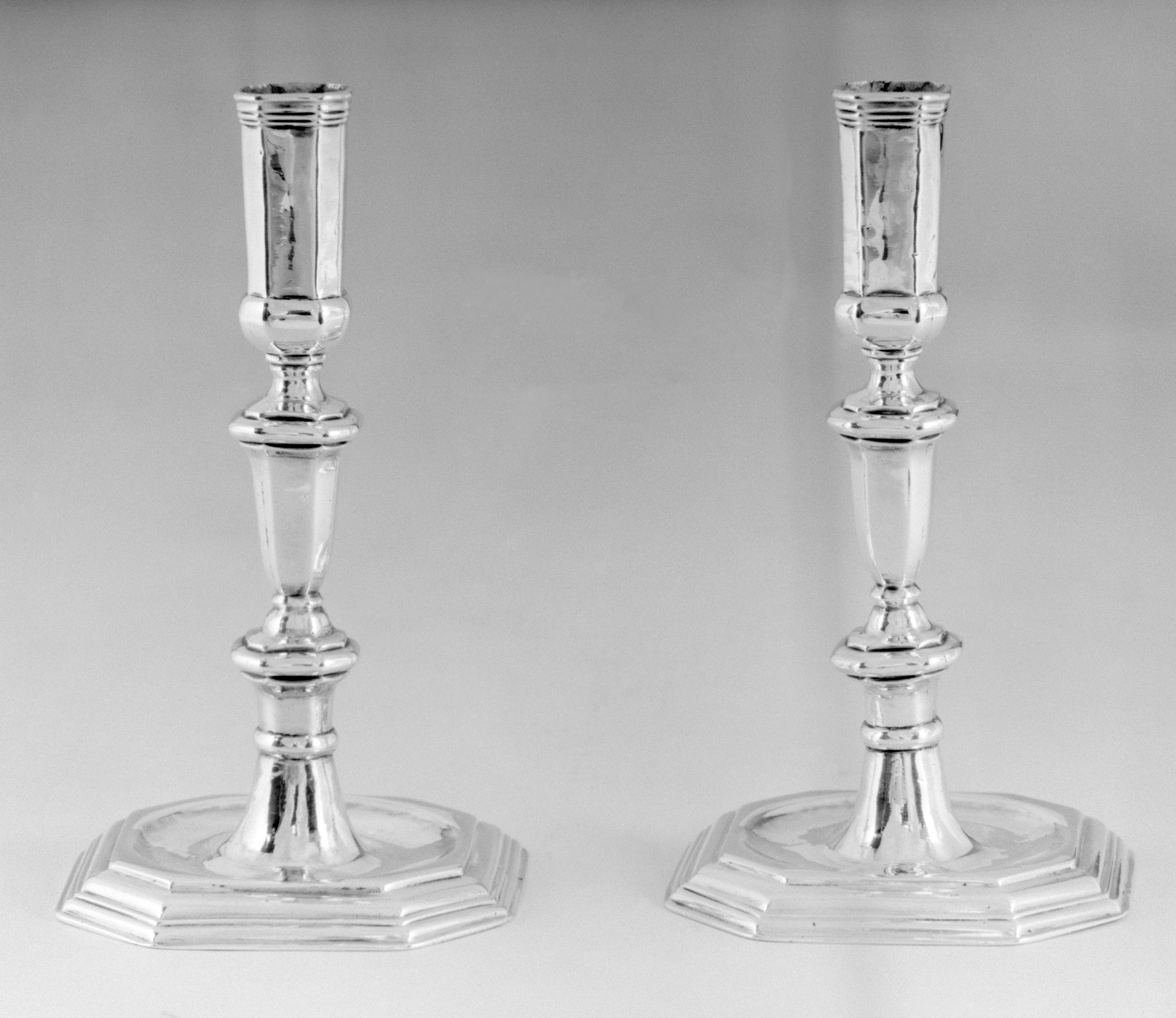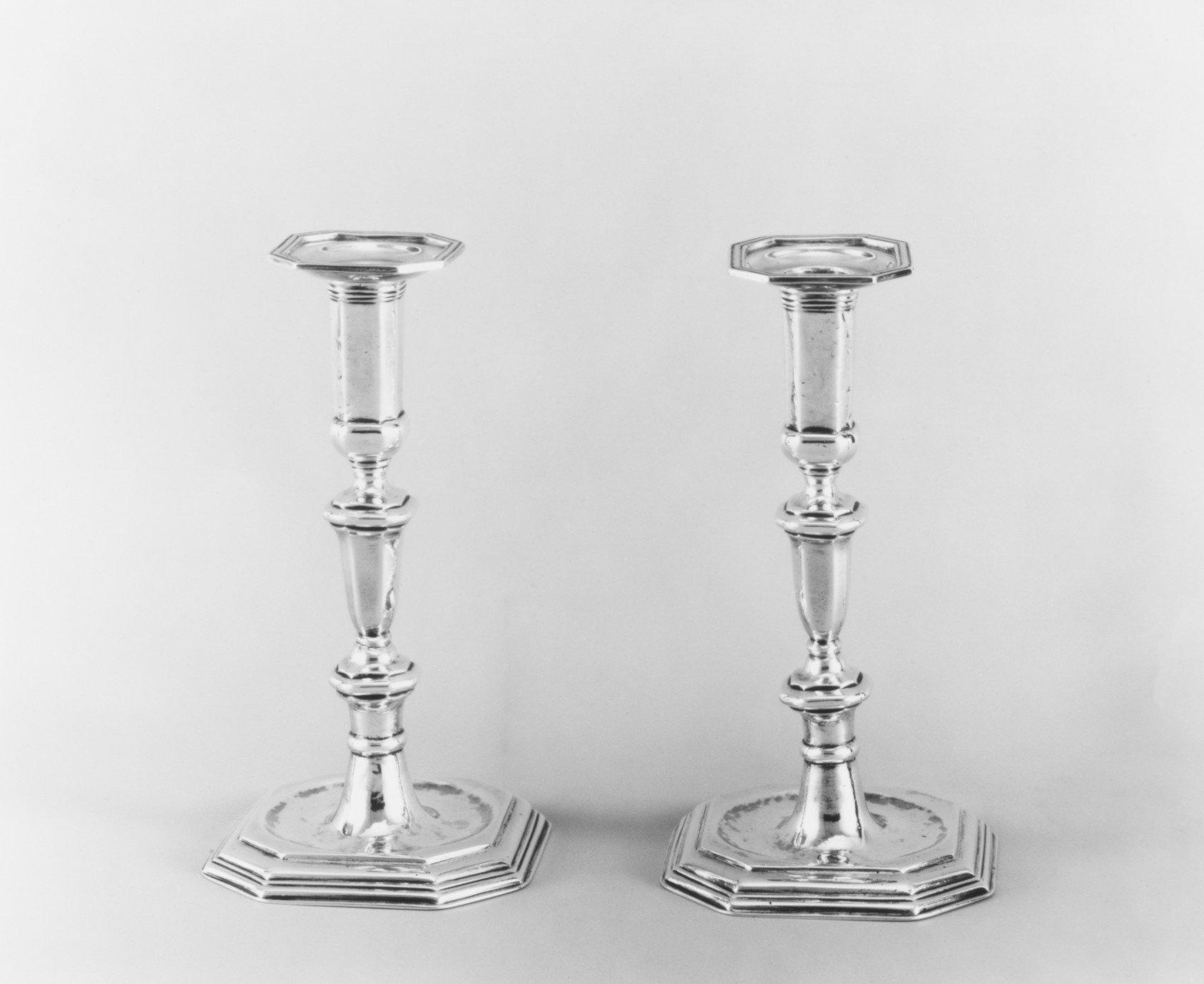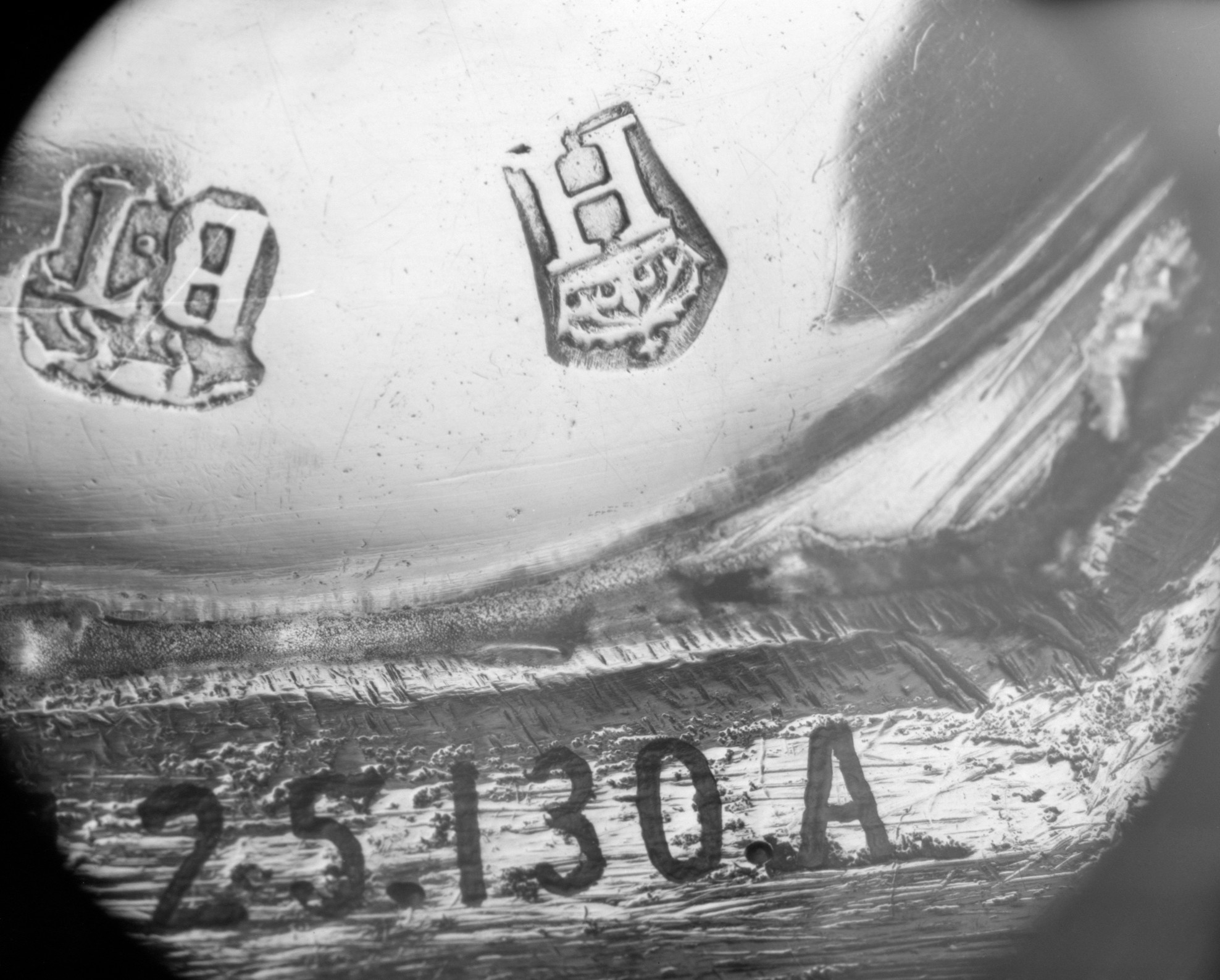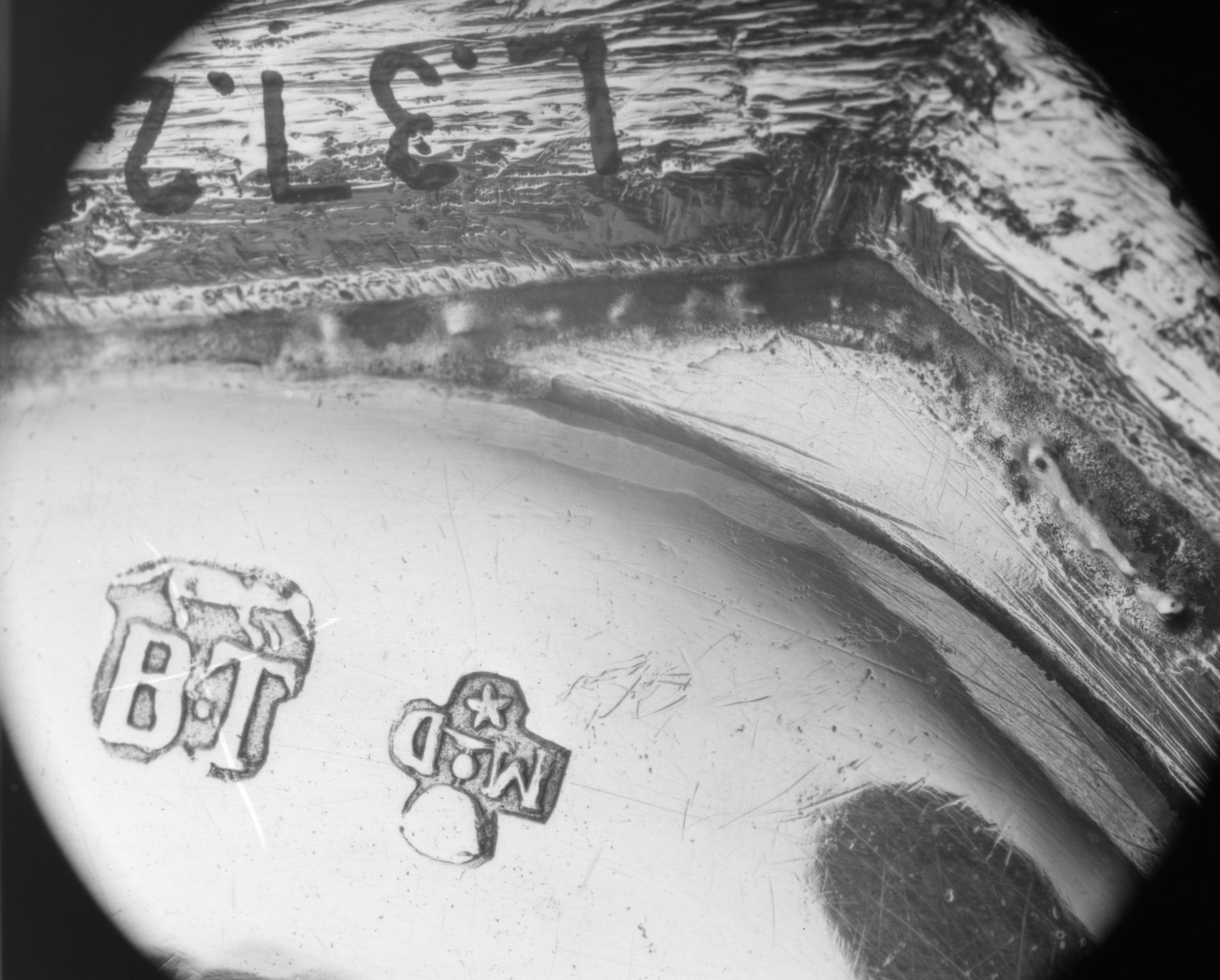Pair of candlesticks
Not on view
In the era before gas lighting and electricity, candles played a principal role in illuminating the domestic interior. Beeswax candles burned clean, had a pleasant smell, but were quite expensive compared to those made of tallow.
The relatively small size of this pair of candlesticks may be an indication that they were part of a toilet set or at any rate would have been used in private domestic quarters. Candlesticks of this type with a baluster shaft, supported on an octagonal foot, decorated with incised lines, were made in great numbers from the end of the seventeenth to the middle decades of the eighteenth century.
This pair of candlesticks predates the use of bobeches (a later addition); the large foot is dished to capture the melting wax.
Daughter of one of the founders of the Weyerhaeuser Timber Company, Catherine D. Wentworth (1865–1948) was an art student and painter who lived in France for thirty years. She became one of the most important American collectors of eighteenth-century French silver and on her death in 1948 bequeathed part of her significant collection of silver, gold boxes, French furniture, and textiles to the Metropolitan Museum. The collection is particularly strong in domestic silver, much of it provincial, as illustrated by this pair of candlesticks by the unknown master MD made in the early eighteenth century in Béthune (west of Lille).
Due to rights restrictions, this image cannot be enlarged, viewed at full screen, or downloaded.
This artwork is meant to be viewed from right to left. Scroll left to view more.
